It’s often said that there are five key ways to connect with nature: Contact, Emotion, Beauty, Meaning and Compassion. Today we’re going to focus on Contact, so I’d like to encourage you to tune into your senses.
I’m going to share some prompts, but the tasks will really be led by you. Maybe you want to focus on one sense each weekday next week or perhaps you’d like to try all five on one walk this weekend. It’s possible that one of the prompts may not feel right for you to explore at all. You might decide to write your findings down in your nature journal, or maybe you’d prefer to try and enter a meditative state in order to really focus on the task at hand. Either way, do what feels right for you and see where your senses take you…
WHAT CAN YOU SEE?
Look out of your window - what do you see that’s natural? It could be a fluffy cloud, a bird perched on a telephone wire, a tree swaying gently in the breeze, the flowers you planted in a box on your windowsill… Whatever you notice, really look at it.
Now, if you can, go for a walk and stay in the same spot for a few minutes. What do you see here? What made you stop in this spot - was it something you saw? Maybe you’d like to get up really close and personal with something you’ve never stopped to look at before, like moss growing on a wall on your street, or the bark of a tree you see on your daily commute.
I find drawing and painting this makes me look at things much more deeply. For example, if I’m trying to draw a leaf I’ll look at the edges - are they smooth, wavy, toothed? I’ll notice things I never have before, like the fact the veins are perfectly symmetrical, or alternating off the midrib (yes, I did just Google ‘parts of a leaf’ in order to remember the word midrib!).
WHAT CAN YOU HEAR?
Whether you’re at home with your windows open, or out in nature, can you hear anything natural? I’m writing this in my garden, where the main thing I can hear currently is my neighbour playing It Wasn’t Me by Shaggy on their radio and a plane flying above me, but if I close my eyes and focus on tuning into my hearing, I can also hear a collared dove cooing, a bee buzzing past, some sparrows chattering on the roof and the crickets that have made my meadow-like lawn their home. Sometimes it can be hard to tune out the man-made sounds and focus on the natural ones, but the more you do it the easier it gets, I promise!
If you’re in a really busy city and are struggling to hear anything natural over traffic, planes etc maybe you can listen to some nature sounds online instead. Last year, a study revealed the promising effects of exposure to nature sounds through a mobile app on improving students’ learning performance. A group of students listened to nature sounds for at least 30 consecutive minutes per day while working on academic tasks and a control group performed the same tasks without the nature sounds app. The students who listened to nature sounds outperformed those in the control group in their engagement in deep learning, frequency of academic procrastination, and academic self-efficacy.
WHAT CAN YOU SMELL?
Unless your neighbour has recently mowed their lawn, you might need to work a little harder for this one! When I walked into my garden earlier I could smell fresh compost (I’m in the process of replanting some beds) but now, sitting at the table, I can’t smell anything in particular. However, if I get up and head over to my plants, I’ll be rewarded by the aniseedy whiff of fennel, the aromatic fumes of sage, the fresh scent of nasturtium and the unmistakable smell of tomato plants.
I recommend heading out on a walk and finding a few different leaves to crush between your fingers - see if you can find a walnut tree for this one. Some people say they smell like furniture polish or boot polish, others think they have a citrusy twang. Now see if you come across some garlic mustard - grind the leaves up as much as you can between your fingers and see if you can smell garlic. Sometimes smell is a really important part of identifying plants, trees or fungi.
WHAT CAN YOU FEEL?
I’m talking about literally feeling things between your fingers or below your feet here, but tuning into the way nature makes you feel is always a valuable exercise too! My favourite thing in my garden for this prompt is lamb’s-ear - a plant with a very apt name that takes me straight back to my grandparents’ garden where I was mesmerised by stroking the soft furry leaves as a child. Remember you don’t have to just feel things with your hands - maybe you’d like to take your shoes and socks off and walk barefoot on the grass, or paddle in your local river.
WHAT CAN YOU TASTE?
At this point I am going to remind you to never eat anything unless you are 100% confident you can ID it correctly. If you can, great, have a taste! Maybe you have some herbs growing on your windowsill, there might still be some ripe blackberries hiding in plain sight where you live, or perhaps you just want to open your mouth and taste the droplets next time it rains.
If you want to forage, here’s a video which goes through some of the things that can be found in September in the UK.
HAVE FUN!
And that’s it! What did you discover? How did tuning into your senses make you feel? Do you feel more connected with nature? Maybe the tasks had no effect on you at all… Either way, I’d love to know the outcomes, so let me know how you get on in the comments!






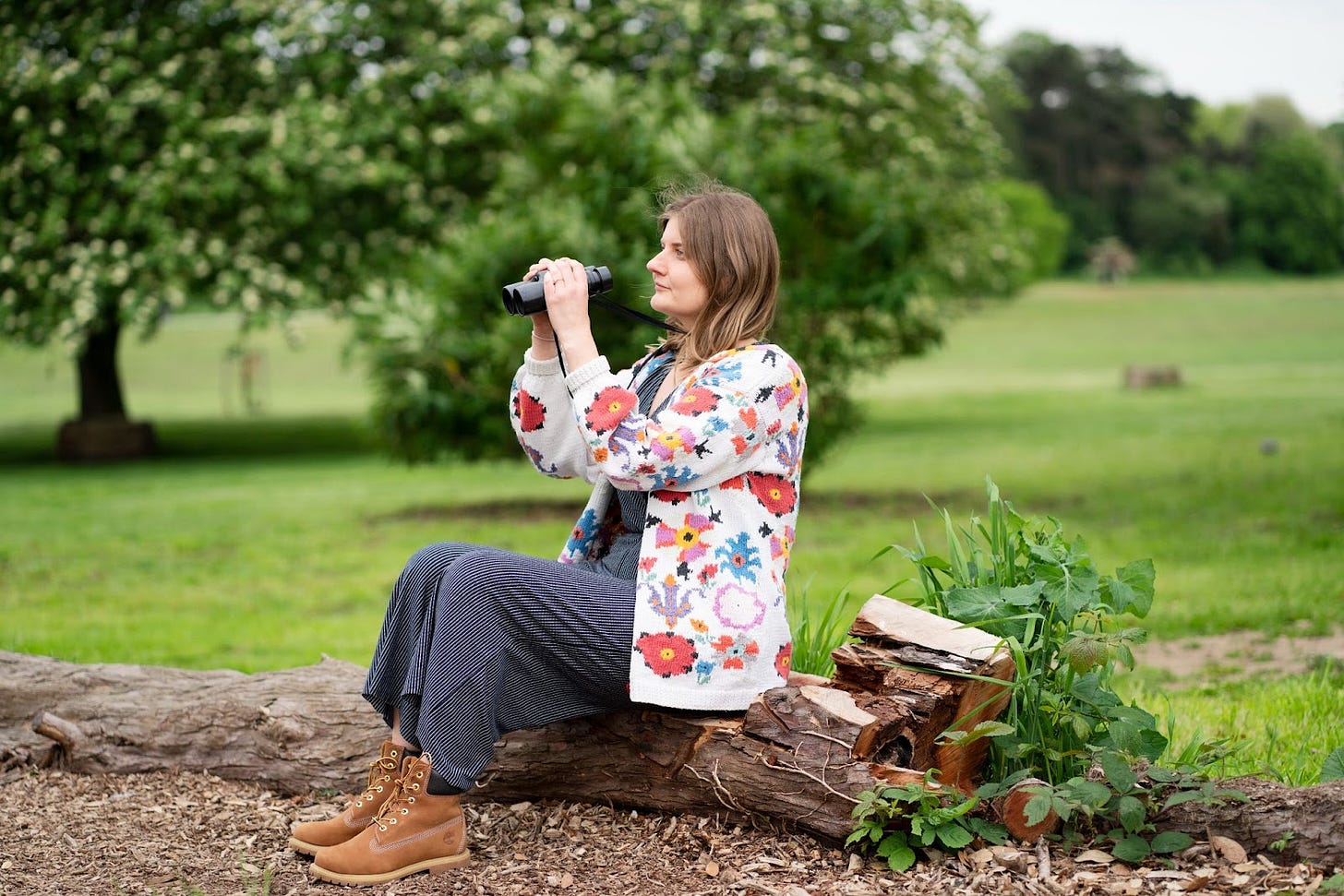
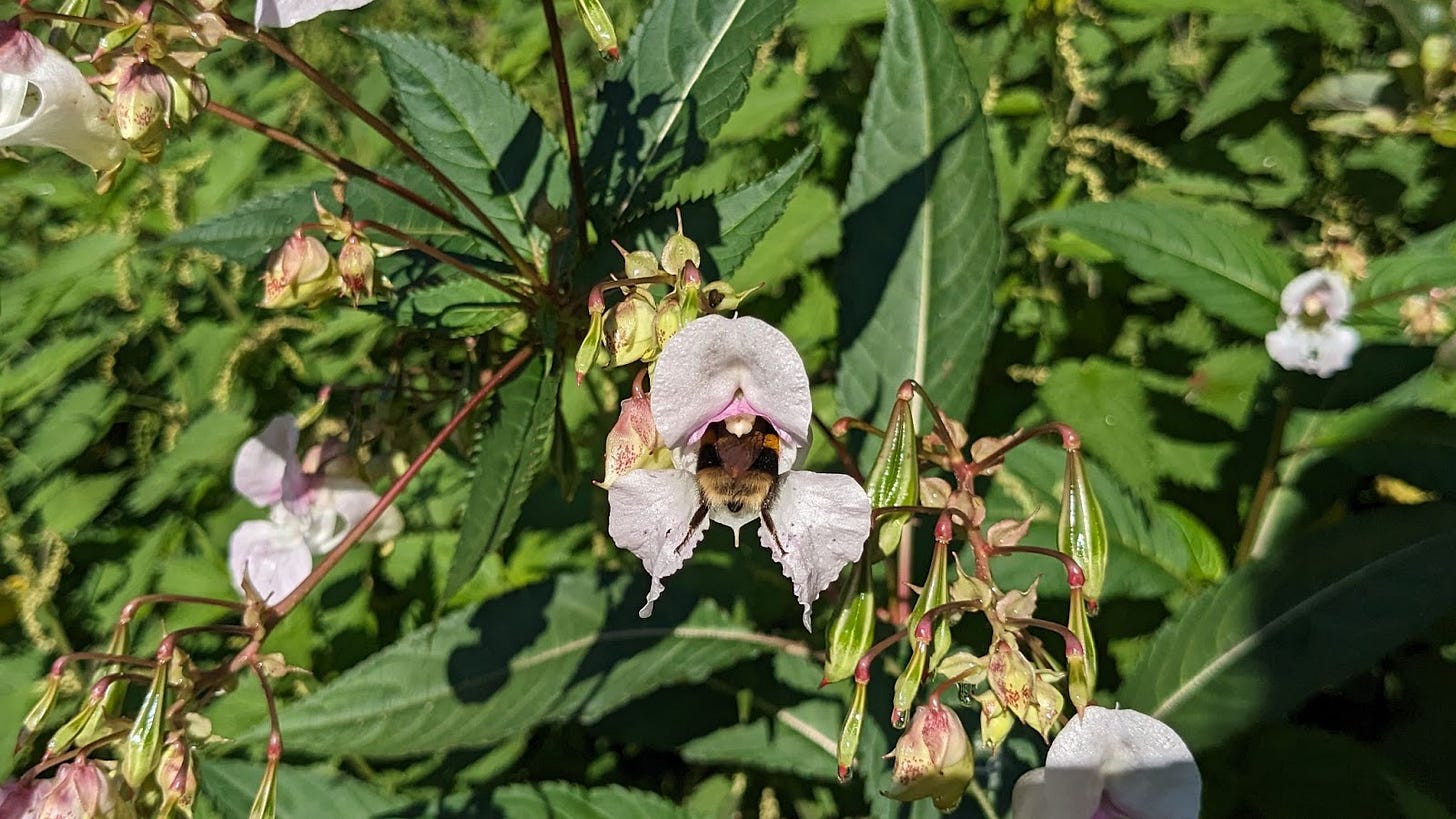
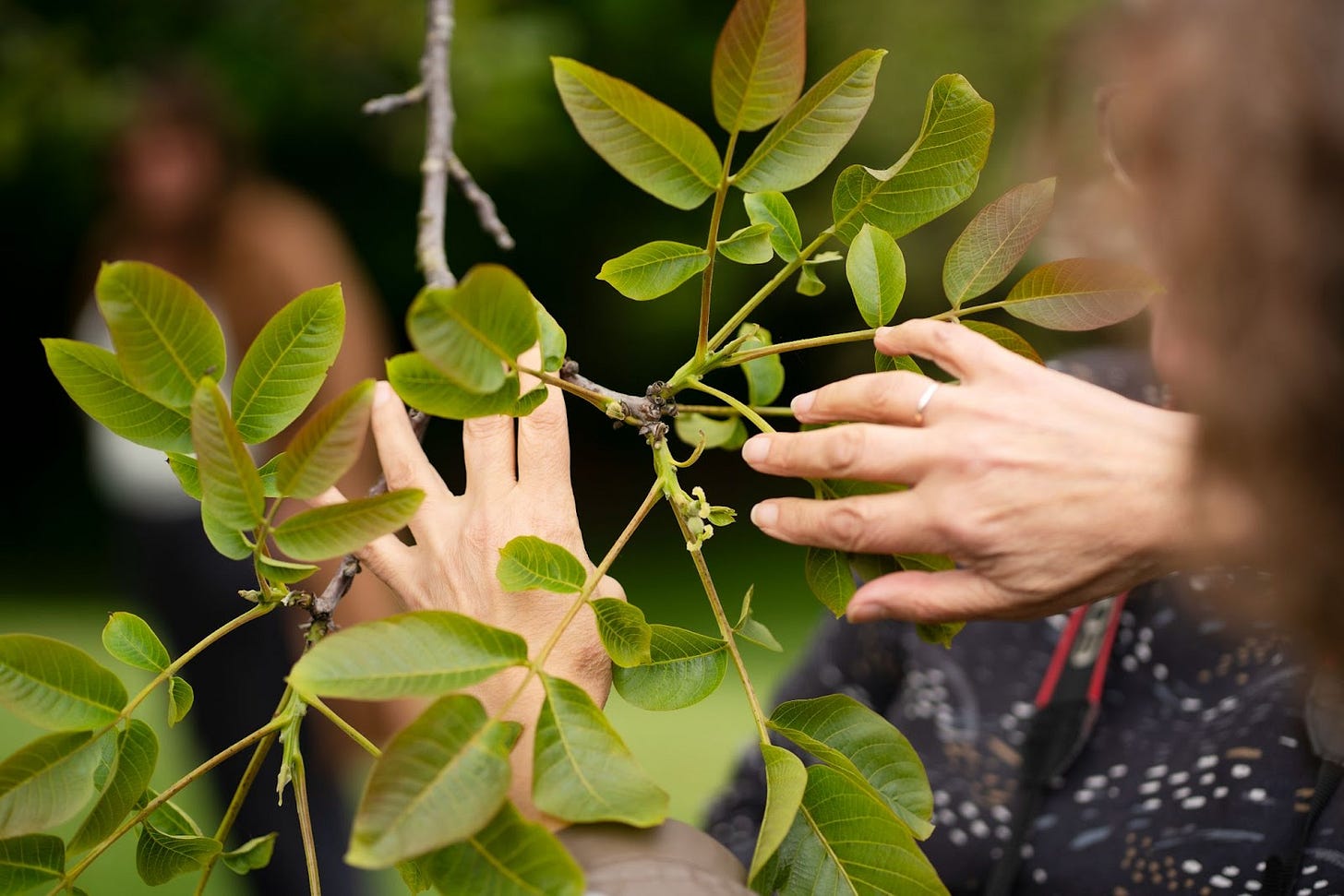
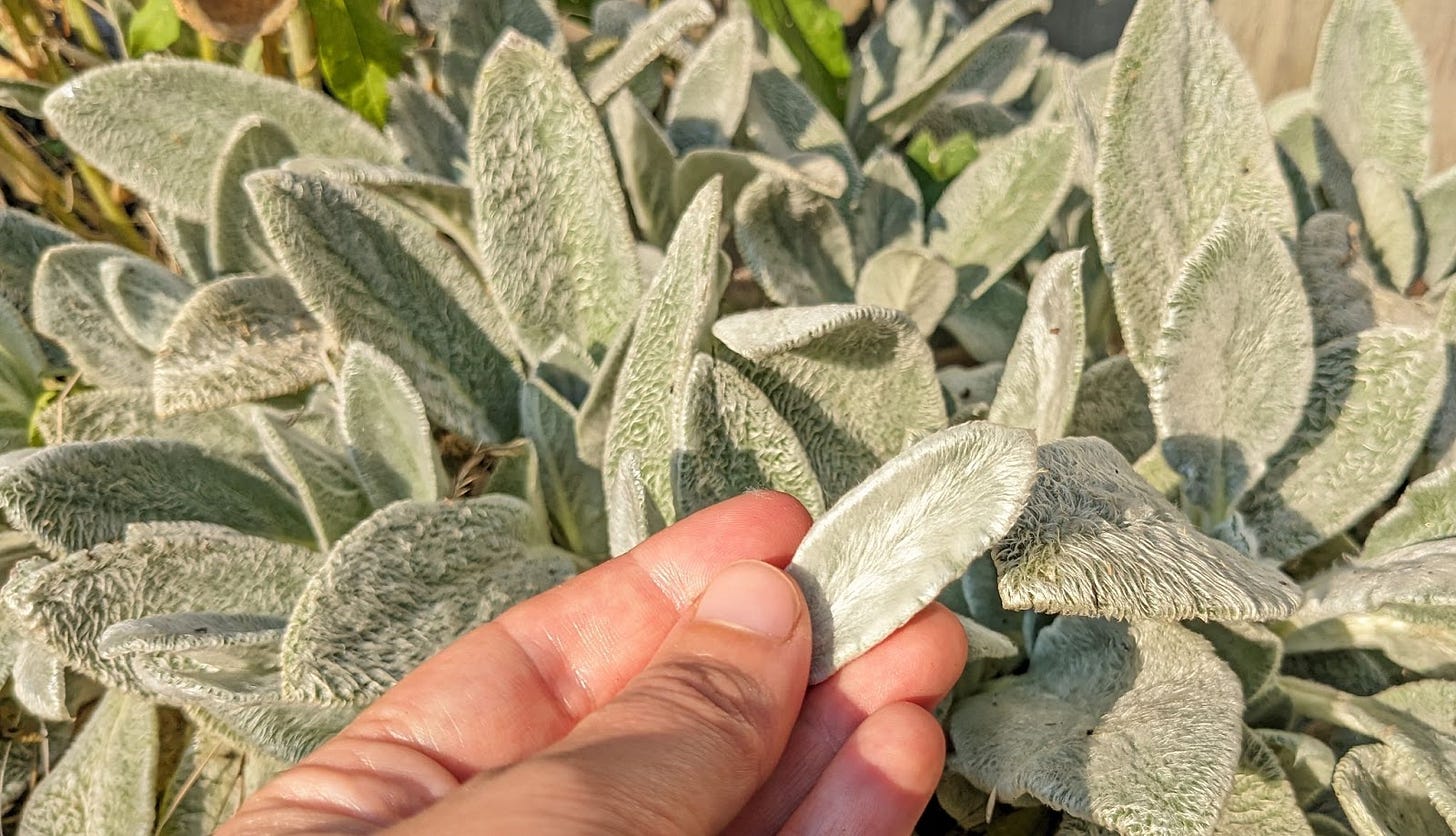
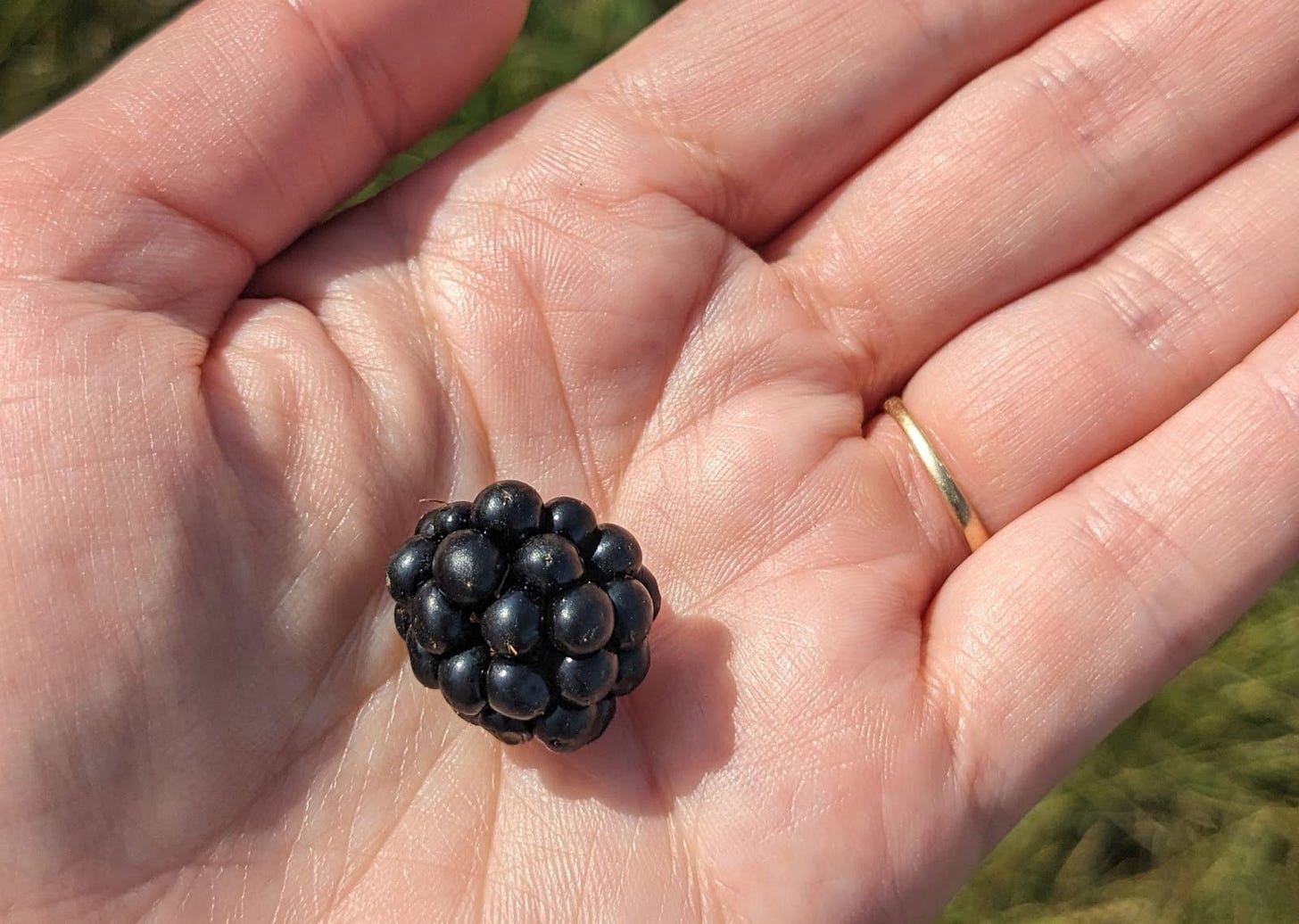

I really enjoyed reading this Zabby!! I often connect with my senses using the 54321 grounding exercise but I really like how you've expanded on how to use your senses and specifically with nature! The studies you mentioned about nature sounds were reaaally interesting 🤔
Also we have a walnut tree and I've always thought it smells very citrusy!!
Looooove this idea! Going to try this next time x